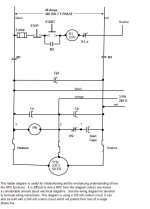I'm looking for info on why I should balance the legs of the RPC I plan to build. I've found a lot of info here assuming I will want to, but often not saying what the advantages are. I know surface finish is commonly cited, but I'm not surface grinding. I want to run a milling machine from 1944 in my blacksmithing shop. It has multiple motors (2 hp spindle, 1.5 hp table drive, ? hp coolant pump). My current plan is a plain, pony start RPC, with 5 HP motor and no additional balancing. I'm OK with exposed belts instead of a push button start for now.
Are there serious cost advantages due to electrical use? What else am I missing? I'm about to order pulleys and wiring for the motors, and if there's a compelling reason, I'll build the whole balanced electric start system from the beginning. I'd prefer to spend the money tooling up the mill, though. What detailed articles are available online?
Thanks
Are there serious cost advantages due to electrical use? What else am I missing? I'm about to order pulleys and wiring for the motors, and if there's a compelling reason, I'll build the whole balanced electric start system from the beginning. I'd prefer to spend the money tooling up the mill, though. What detailed articles are available online?
Thanks



 However, it sounds like buying a pair of 60-80 micro Farad caps should get me close enough for a 5HP motor.
However, it sounds like buying a pair of 60-80 micro Farad caps should get me close enough for a 5HP motor.